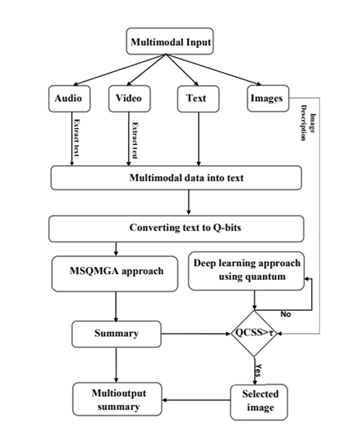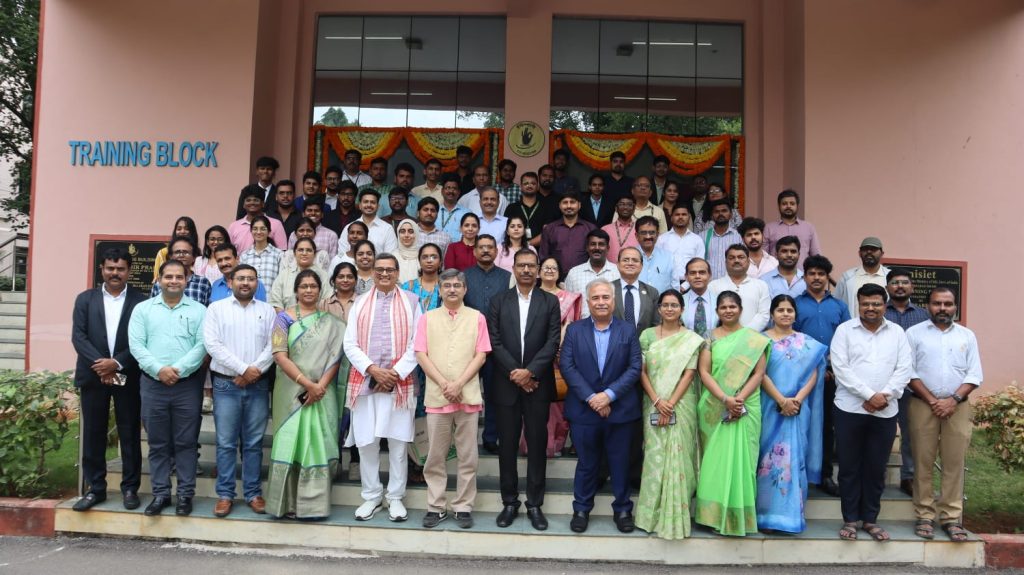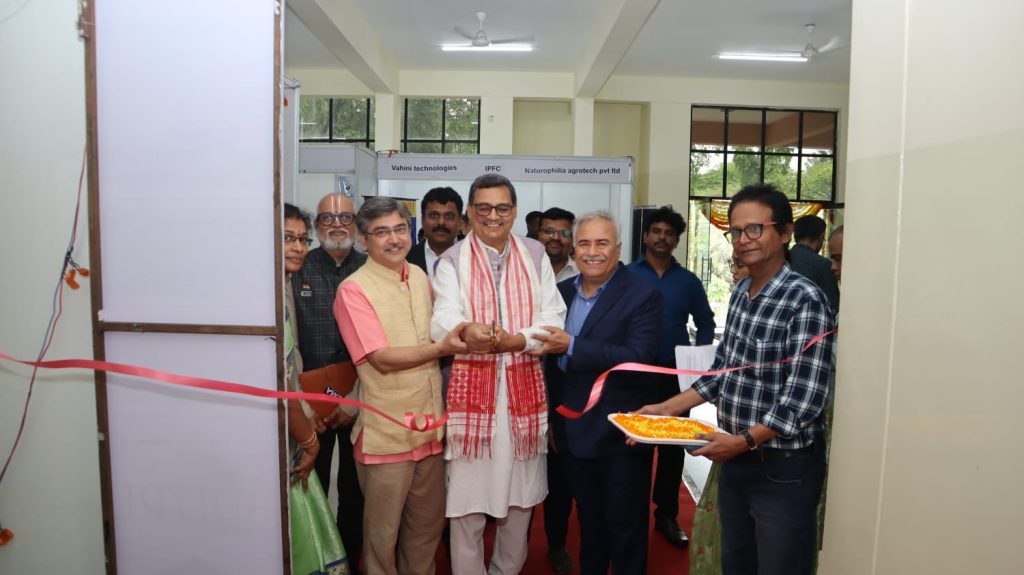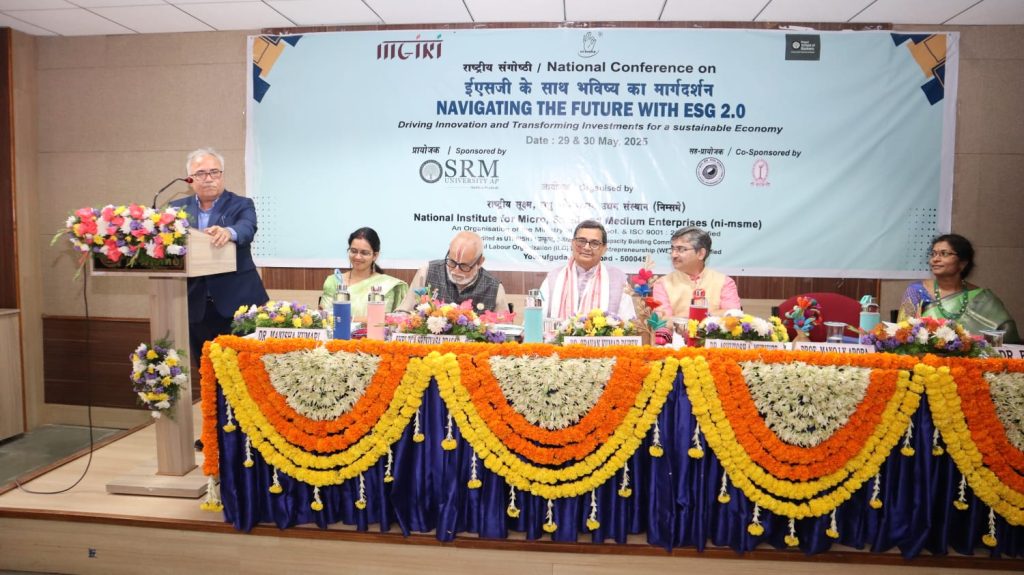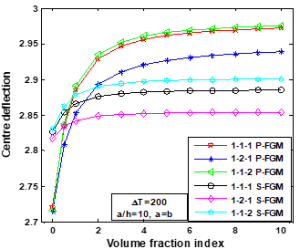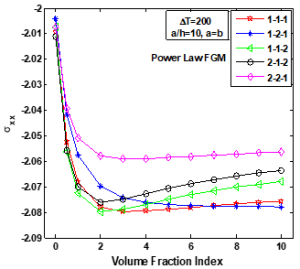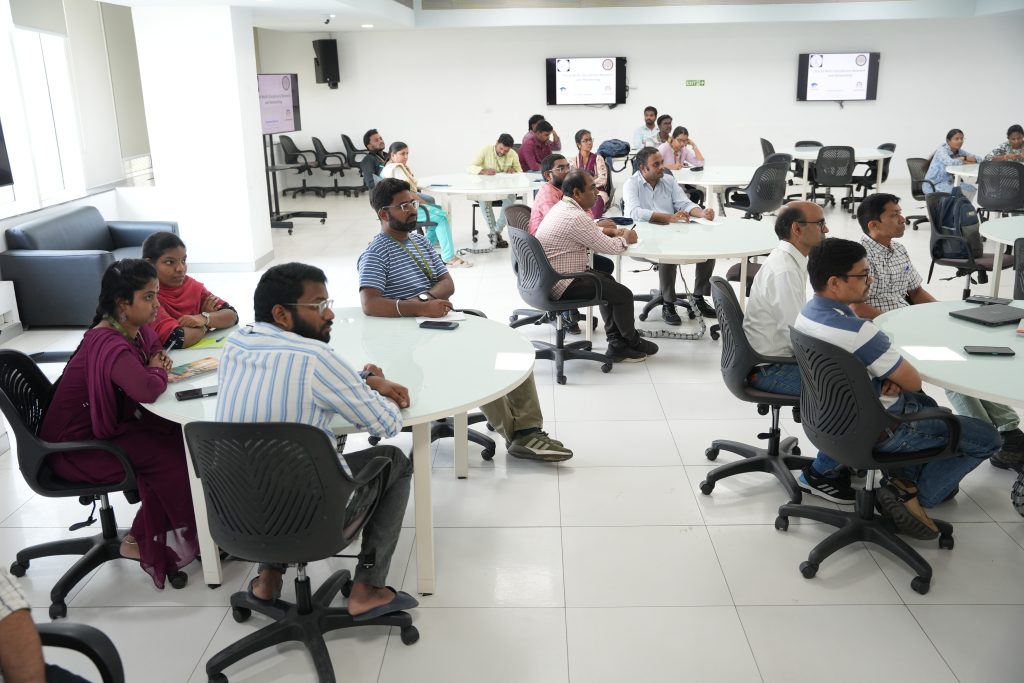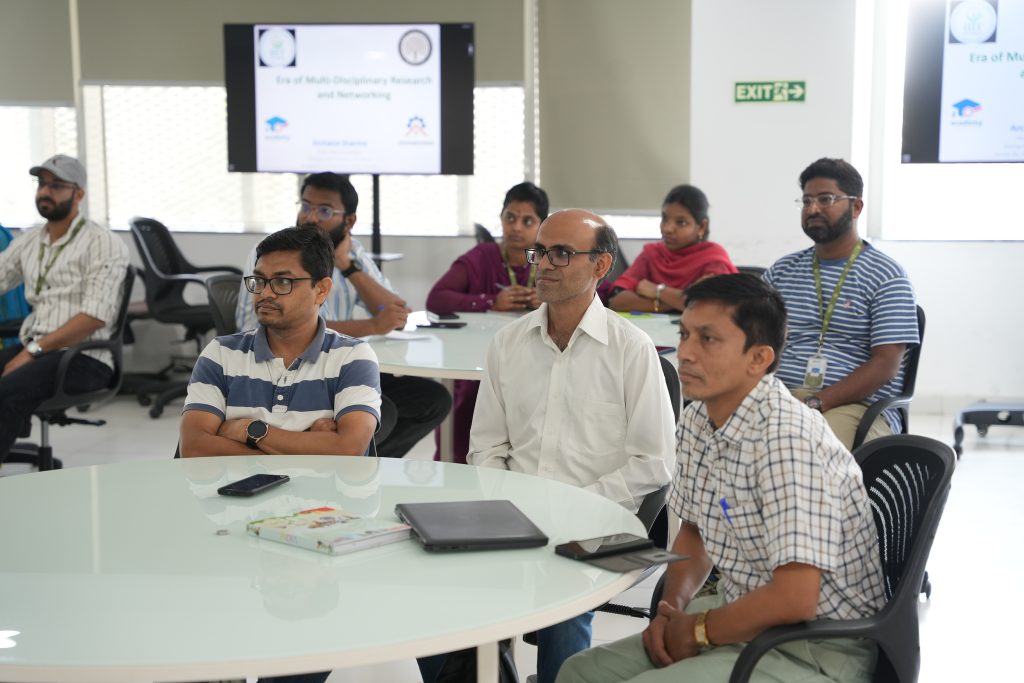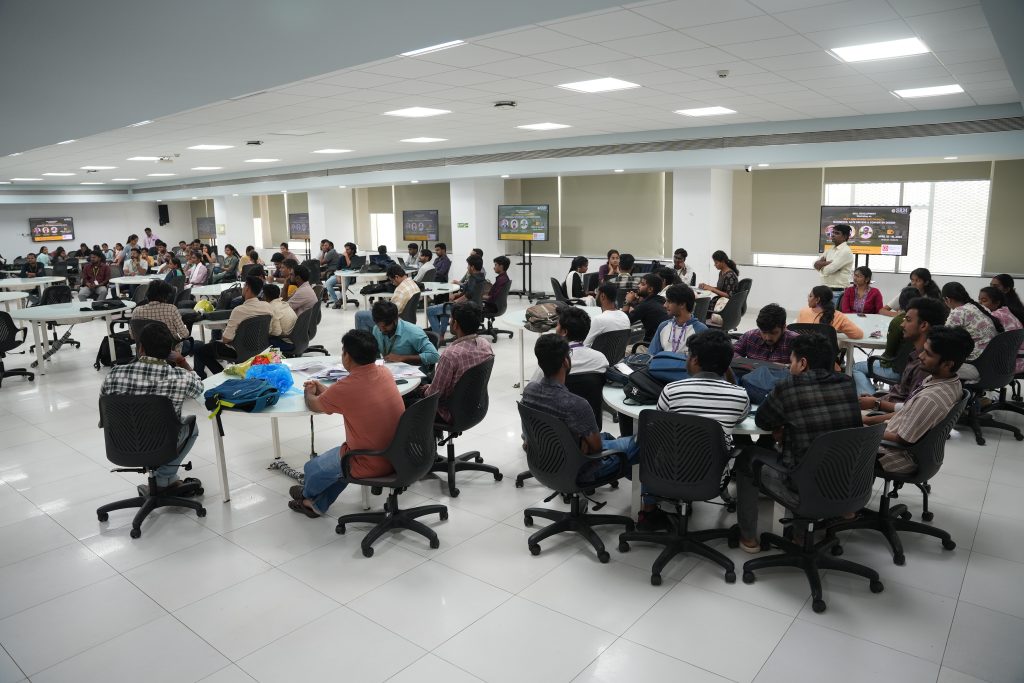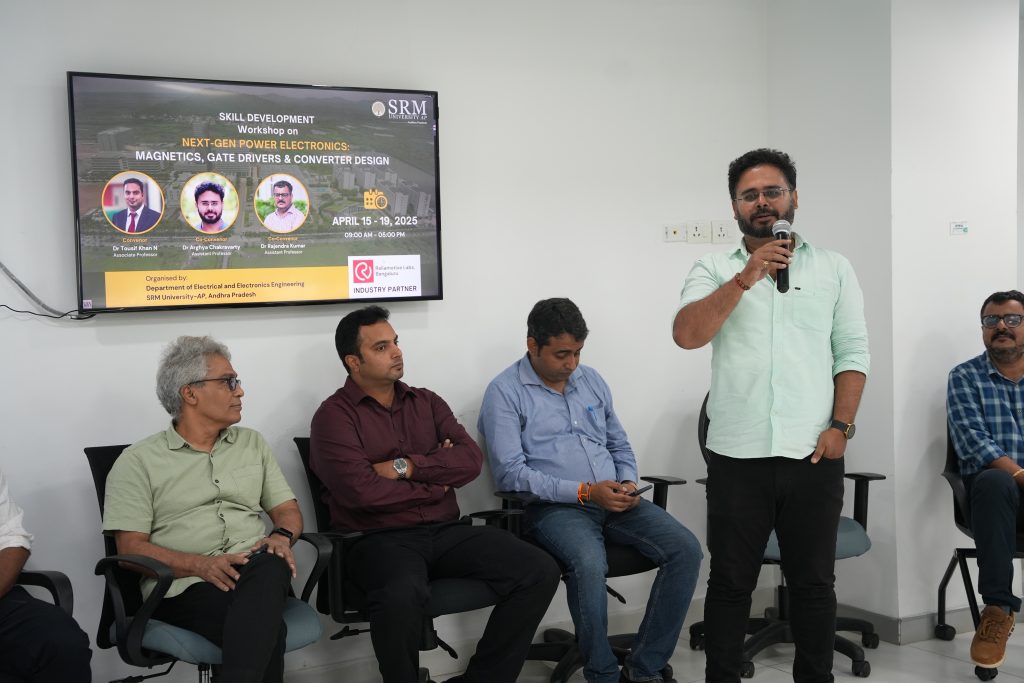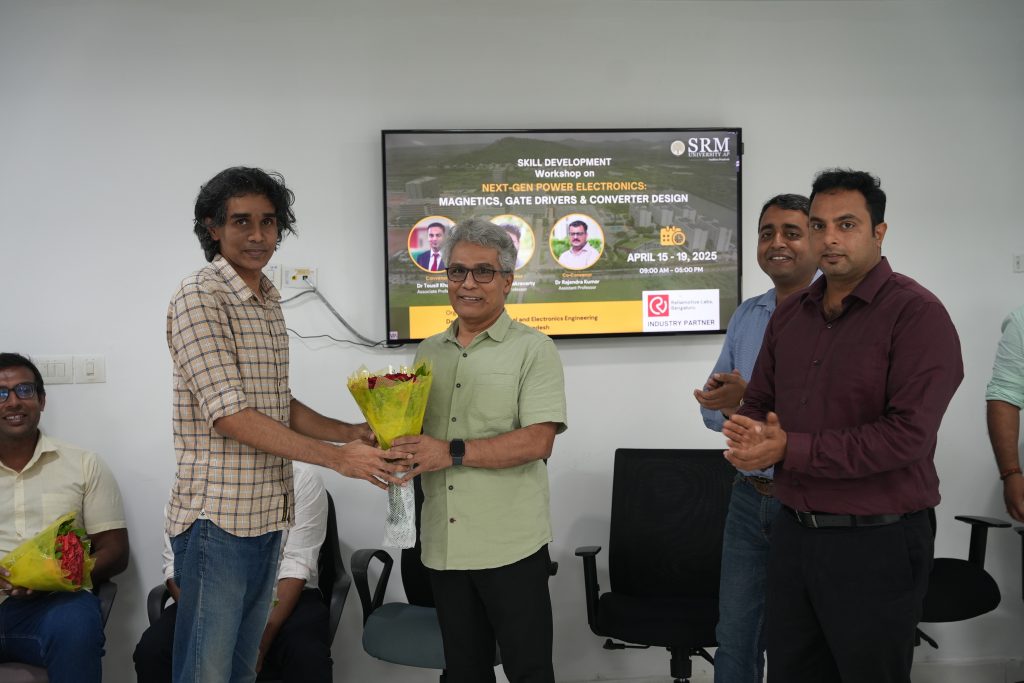Quantum-Inspired Multimodal Summarizer: A Breakthrough for the Information Age
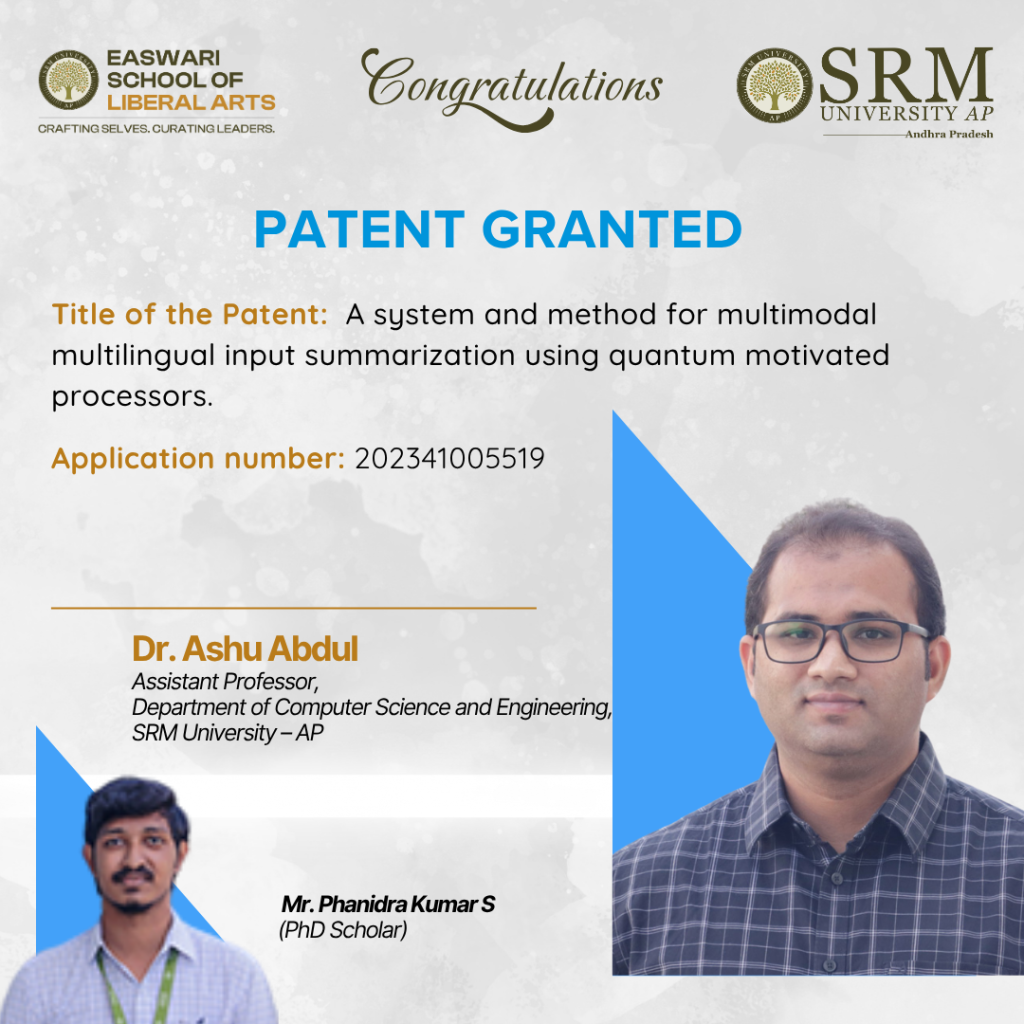
The digital age is flooded with multimedia content ranging from articles and podcasts to videos and images, spanning multiple languages. The challenge isn’t just accessing information but understanding and summarising it efficiently. Addressing this need, a pioneering patent titled “A System and Method for Multimodal Multilingual Input Summarization Using Quantum Motivated Processors” (Application Number 202341005519) has been granted to Dr Ashu Abdul, Assistant Professor in the Department of Computer Science and Engineering, and Mr Phanidra Kumar S, PhD Scholar, as published in the Indian Patent Office Journal. This innovative system converts all kinds of media like text, images, audio, and video into descriptive text, then leverages quantum-inspired algorithms to extract and stitch together the most relevant sentences and visuals, thereby crafting a perfect summary.
Abstract
This research details a system and method for summarizing multimodal and multilingual input data by leveraging quantum-motivated processors. The system is designed to handle input documents comprising text, audio, image, and video data, potentially in multiple languages. A pre-processing engine extracts textual descriptions from all these modalities (using deep learning, CNN, VAF, Python), merging them into a unified text corpus. A quantum enabler module assigns initial probabilities and encodes sentences from this corpus into binary states (0s or 1s), reflecting a quantum measurement concept (using randint). A selection module, utilizing an objective/fitness function incorporating factors like term frequency, sentence length, pronoun presence, coverage (QCSS-based similarity), and title relevance (Sentence-to-Title QCSS), calculates a fitness score for each encoded sentence and shortlists relevant ones using a “radiant function”. This module also handles duplicate removal based on QCSS. A rearrangement module scores and reorders the shortlisted sentences based on metadata (like publishing date) and scores (like ROUGE). A summary generation module produces a textual summary. Concurrently, an image selector engine selects a relevant image from the input data, primarily based on the image’s textual description and the generated summary, often using QCSS (Quantum Cosine Similarity Score). Finally, an output engine merges the textual summary with the selected image to create a multioutput (MO) summary. The system may also include a machine translation engine to translate non-English extracted descriptions into English before summarization, if needed. The approach employs quantum measurement and adaptive quantum rotation gates within an evolutionary framework (suggesting a Quantum Genetic Algorithm approach, referred to as MSQMGA) to find optimal summary sentences, demonstrating improved performance and efficiency compared to traditional Genetic Algorithms.
Practical Implementation of the Research
The system’s design outlines a modular architecture suitable for software or hardware implementation, involving distinct processing engines (Input, Pre-processing, Quantum Enabler, Selection, Rearrangement, Summary Generation, Image Selector, Output, and potentially Machine Translation). Key technical details include:
- Pre-processing: Use of Python, deep learning models (VAF, CNN) for extracting textual descriptions from audio/video/image data.
- Quantum Enabler/Selection: Assignment of initial probability (1/√2), encoding via a randomized quantum measurement model (randint(0,1) <= alpha_i), fitness function incorporating multiple weighted factors (fs = [0.75 * ((w1) * C * + w2 * pn * Ts) + 0.25 * S1] * Tf), QCSS for similarity checks (summary-to-document, sentence-to-title, intra-sentence, image selection), shortlisting via a radiant function, duplicate removal via QCSS.
- Rearrangement: Sorting shortlisted sentences based on metadata like publishing date and ROUGE score.
- Image Selection: Deep learning models like QTL-based CNN-LSTM, thresholding (e.g., 0.85).
- Multilingual Handling: Explicit mention of a Machine Translation Engine (122) to translate non-English extracted text into English
- Performance: Claims of achieving ROUGE-1 scores (e.g., 0.78) and QCSS scores (e.g., 92% for image ID), and being “quite faster” compared to traditional GA approaches.
- Datasets: Evaluation conducted using DUC 2005, DUC 2007, Indian Express datasets for text summarization, and Flickr 8k, Flickr 30k, Indian Express datasets for image description (ID).
These specifics suggest practical implementation could involve developing software modules that utilize libraries for deep learning (e.g., TensorFlow, PyTorch with CNN, LSTM components), natural language processing (e.g., NLTK, spacy for tokenization, POS, lemmatization), and potentially frameworks for simulating or interfacing with quantum-inspired algorithms. The “real-time applications” aspect implies design considerations for efficiency and processing speed. Potential deployments include news aggregation platforms, content management systems, competitive intelligence dashboards, cross-cultural communication tools, or applications for analysing vast archives of mixed-media data.
Social Impact
Beyond basic information access, this technology has the potential to foster greater understanding and reduce bias by providing summarized content across linguistic and cultural divides. It could empower individuals and organisations to consume and analyse global information landscapes more effectively. For educators, it could facilitate the creation of multimodal learning materials from diverse sources. For researchers, it could accelerate literature review across different fields and languages. However, it also raises potential implications related to the source and neutrality of the summarisation models themselves – whose perspective is encoded, and how might summaries differ based on training data or algorithmic biases? Ethical considerations around information representation and potential manipulation of summaries would be important as such technologies become more widely adopted.
Future Research Plans
Although the patent doesn’t explicitly list a roadmap, the detailed description and stated advantages imply several potential future research directions and refinements based on the current work:
- Algorithmic Refinement: Further optimizing the “quantum-motivated” genetic algorithm (MSQMGA) framework, including the fitness function weights (w1, w2 are mentioned as trainable parameters), the “radiant function” for shortlisting, and the quantum measurement mapping.
- Modality Integration: Enhancing the pre-processing and integration of information from different modalities, potentially exploring more sophisticated methods for cross-modal semantic understanding beyond extracting textual descriptions.
- Cross-Lingual Capabilities: Improving the multilingual summarization accuracy, potentially integrating more advanced machine translation techniques directly within the summarization process or extending the quantum-motivated selection mechanism to handle multi-language sentence comparisons natively.
- Quantum Hardware Exploration: Investigating the feasibility and performance benefits of implementing parts of the system, particularly the quantum enabler and selection modules, on actual quantum computing hardware as it matures, moving beyond the current “quantum-motivated” (inspired/simulated) approach.
- Scalability and Real-time Performance: Further developing the system to handle even larger volumes of multimodal, multilingual data efficiently for true real-time applications.
- Evaluation and Benchmarking: Expanding testing on a wider range of diverse datasets and benchmarking against more varied state-of-the-art multimodal and multilingual summarization techniques.
- Summarization Quality: Focusing on subjective quality metrics of the generated summaries, such as coherence, readability, and conciseness, in addition to objective metrics like ROUGE
- Image Selection Enhancement: Refining the image selection process, potentially considering factors beyond just textual description and summary similarity, such as image quality, saliency, and contextual relevance within the broader multimodal input.
- Published in CSE NEWS, Departmental News, News, Research News
Prof. Manoj K Arora Delivers a Session at the National Conference on ESG 2.0
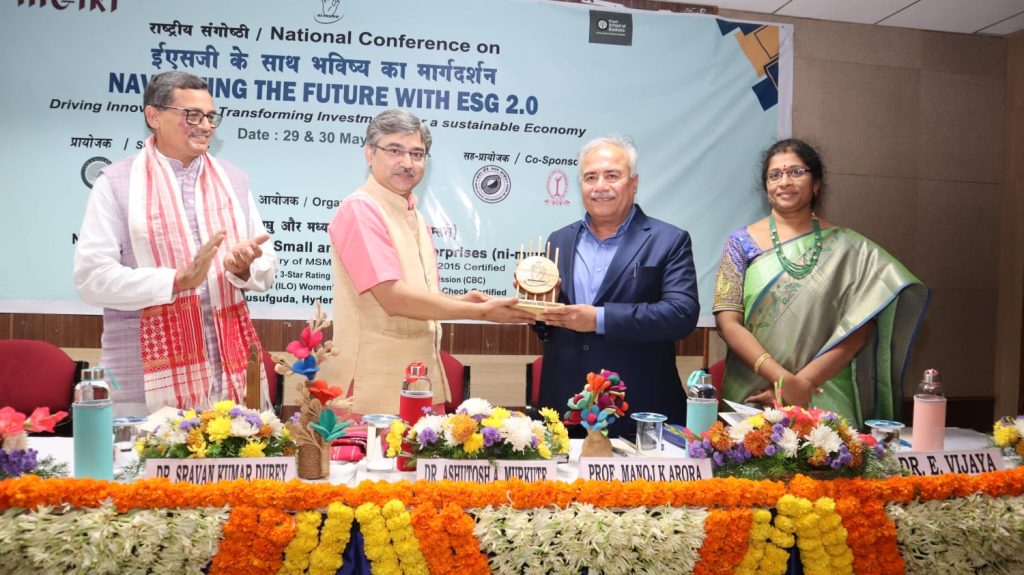
Prof. Manoj K Arora, Vice Chancellor, SRM University-AP, delivered an insightful session at the National Conference on Navigating the Future: ESG 2.0 held on the theme “Advancing Green Finance: Driving Innovations and Transforming Inventions for a Sustainable Economy”. Prof. Arora shared his insights on how ESG principles are seamlessly embedded into the educational landscape. The conference was jointly organised by the National Institute for Micro, Small and Medium Enterprises (ni-msme), FinRise, and Paari School of Business, SRM University-AP.
In his session, Prof. Arora addressed the vital role of Environmental, Social, and Governance (ESG) principles in shaping future-ready educational institutions. He elaborated on how SRM AP is embedding ESG into the five foundational pillars of higher education:
- Transparent and ethical Governance
- Eco-conscious Infrastructure
- Empowered Students, Faculty & Staff
- Value-driven Curricula
- Impactful Research & Innovation
He elaborated on SRM AP’s initiatives, including a Green Campus, SDG-aligned research clusters, a Centre of Excellence in Interdisciplinary Research, and the upcoming Master’s in Environmental and Sustainability Engineering, which is aligned with India’s sustainability goals. This highlighted that SRM AP successfully pursues and achieves sustainable transformation.
At SRM University-AP, Amaravati, education plays a transformative role in fostering environmental stewardship, social responsibility, and ethical leadership. The university strives to build a sustainable tomorrow.
Synthesising Copper-based Particles to Recycle Industrial Mineral Waste into Useful Products
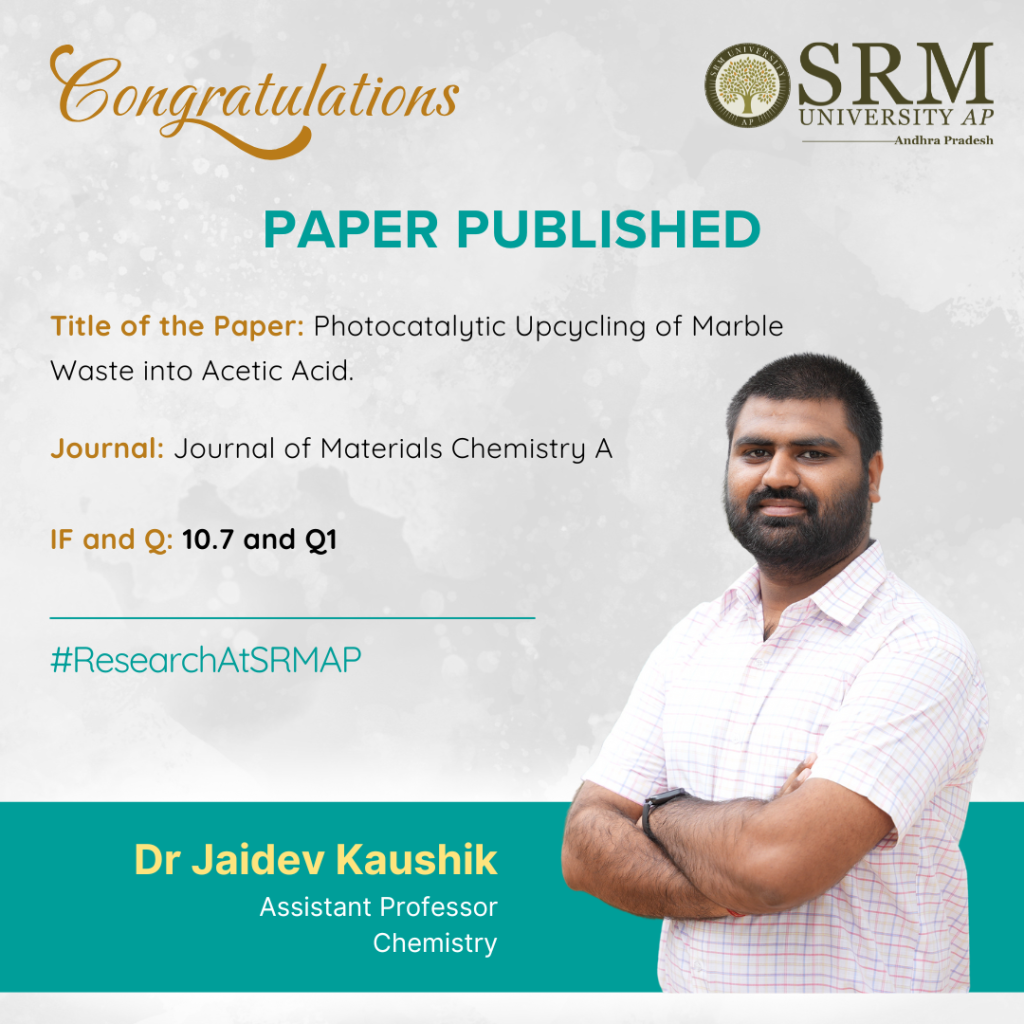
In an attempt to recycle industrial mineral waste into useful products, Dr Jaidev Kaushik from the Department of Chemistry has worked on synthesising copper-based particles that use light to convert carbonate-rich materials like marble dust into acetic acid, a valuable chemical used in industry and fuel production. He has published his research in a paper titled “Photocatalytic Upcycling of Marble Waste into Acetic Acid” in the prestigious Journal of Materials Chemistry A, having an impact factor of 10.7.
The particles drive the reaction efficiently by illuminating the green light on a mixture of the material and hydrogen peroxide solution. He has also tested the method on other carbonate wastes like chalk dust and scale, showing its potential for recycling industrial mineral waste into useful products.
Abstract
In this study, disk-shaped copper sulfide nanoparticles (CuS-NPs) were synthesised via a simple co-precipitation method and used as a photocatalyst for the reduction of carbonate species derived from marble dust into acetic acid (AcOH), an important industrial and biofuel precursor. The photocatalytic reaction was carried out under monochromatic light (525 nm) in a hydrogen peroxide–water mixture, which served as an electron and radical-rich medium. Key parameters such as solvent composition, light source, catalyst concentration and reaction time were optimised to get the maximum yield of AcOH. The reaction mechanism was investigated using radical scavenging experiments. The practical applicability of the approach was further tested on two additional real-life carbonate waste materials, i.e. chalk dust and scale.
Practical Implementation/ Social Implications of the Research
This research offers a sustainable method to convert carbonate-rich industrial wastes like marble dust, chalk dust, and scale into acetic acid, which is widely used in the chemical, pharmaceutical, and biofuel industries. By using light-driven reactions with safe, low-cost materials, the process reduces environmental pollution, supports waste valorisation, and contributes to a circular economy. It can be implemented in industries that generate carbonate waste, promoting green chemistry and lowering dependence on fossil-based raw materials.
Collaborations
Dr Sumit Kumar Sonkar (MNIT Jaipur, India)
Future Research Plans
- The adsorption/photodegradation-assisted quick and efficient removal of next-generation advanced pollutants such as microplastic, pesticides, pharmaceutical waste, etc., by hydrophobic carbon aerogel and their doped and functionalised versions.
- Utilising waste-derived heterogeneous catalysts in organic transformation reactions.
- Selective sensing of toxic metal ions/biomarkers/biomolecules using fluorescent nanomaterials.
- Upcycling of carbonates/CO2 via photo/thermal assisted catalysed reactions to get C1 and C2 hydrocarbons (green fuel).
- Reduction of nitrates/N2 via photo/thermal-assisted catalysed reactions to ammonia.
Link to the article
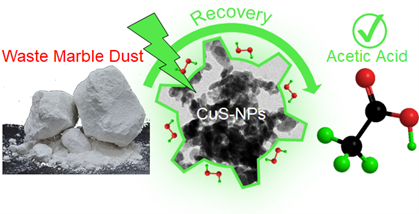
- Published in Chemistry-news, Departmental News, News, Research News
From Vision to Victory — SRM AP Tops the Times Ranking 2025!
SRM University-AP continues its legacy of excellence as it emerges as the No.1 Emerging Engineering Institute under 3 categories in the Times Engineering Institutes Ranking Survey consecutively for the second year. The university secured the top position in the categories – Top Emerging Engineering Institute – Overall, Emerging Engineering Institute – Placements and Emerging Engineering Institute – Research Capability. This is a testament to the SRM AP’s impactful research, global partnerships, innovation, and social outreach, which truly exemplify the spirit of an emerging leader in higher education.
Leading with a Forward-thinking Academic Approach
The university aligns its academic delivery with industry expectations and student aspirations by implementing an Outcome-Based Education (OBE) model that is enhanced by the Choice Based Credit System (CBCS).
The curriculum offers interdisciplinary flexibility through major/minor specialisations and open electives, empowering students to customise their learning pathways. Active and experiential methods—case studies, simulations, projects, internships, and continuous assessments—promote 21st-century life skills, including critical thinking and problem-solving.
A Legacy of Outstanding Placements
SRM AP’s partnerships with leading companies strengthen the relationship between academia and industry, ensuring competent student placements. The university maintains an exceptional placement record, placing students in prestigious companies such as Oracle, IBM, Philips, Neilson IQ, Deloitte, Bosch, Samsung, Hewlett Packard, JPMorgan and Chase, BNY Mellon, TOSHIBA, Amazon, Flipkart Volvo, PayPal, and more.
Core initiatives like mentor-mentee programmes, alumni mentorship, rigorous placement and skill training, instil exceptional resilience and adaptability and help young graduates navigate dynamic market conditions. Also, the ‘Industry-Institute Interaction’ platform allows students to interact with professionals from various industries, helping them gain insights into industry work culture, professional requirements, and career-launching.
Dynamic Ecosystem for Ideas and Impact
SRM AP has a world-class research infrastructure with centres of excellence and a well-equipped library, facilitating cutting-edge research. The research culture has led to 2193 publications (over 40% in Q1 journals), 480+ patents filed, 55+ already granted, and 2 technology transfers with industry. SRM AP ranks 3rd among private universities in the Nature Index 2023 and boasts five faculty members listed in Stanford’s top 2% scientists globally.
A dynamic startup ecosystem supported by corporations, enablers, world-class mentors, top-class institutions, foundations, incubators, and the Government, sets SRM AP apart from its peers. The Hatchlab Research Centre has incubated 40+ startups, and the university’s ADITRI initiative—a CSR-driven rural entrepreneurship summit—has empowered 100 women entrepreneurs from six mandals of Andhra Pradesh through skill-building, mentoring, and market access.
Educating for a New Era
SRM AP has implemented the Strategic Plan 2023–2028 to become an innovation-driven institution, prioritising academic excellence, research innovation, student empowerment, and institutional sustainability. In cognisance of the pioneering vision fuelling Amaravati’s growth, SRM University-AP aspires to build a future-ready, inclusive, and globally respected academic institution that offers holistic education to its students.
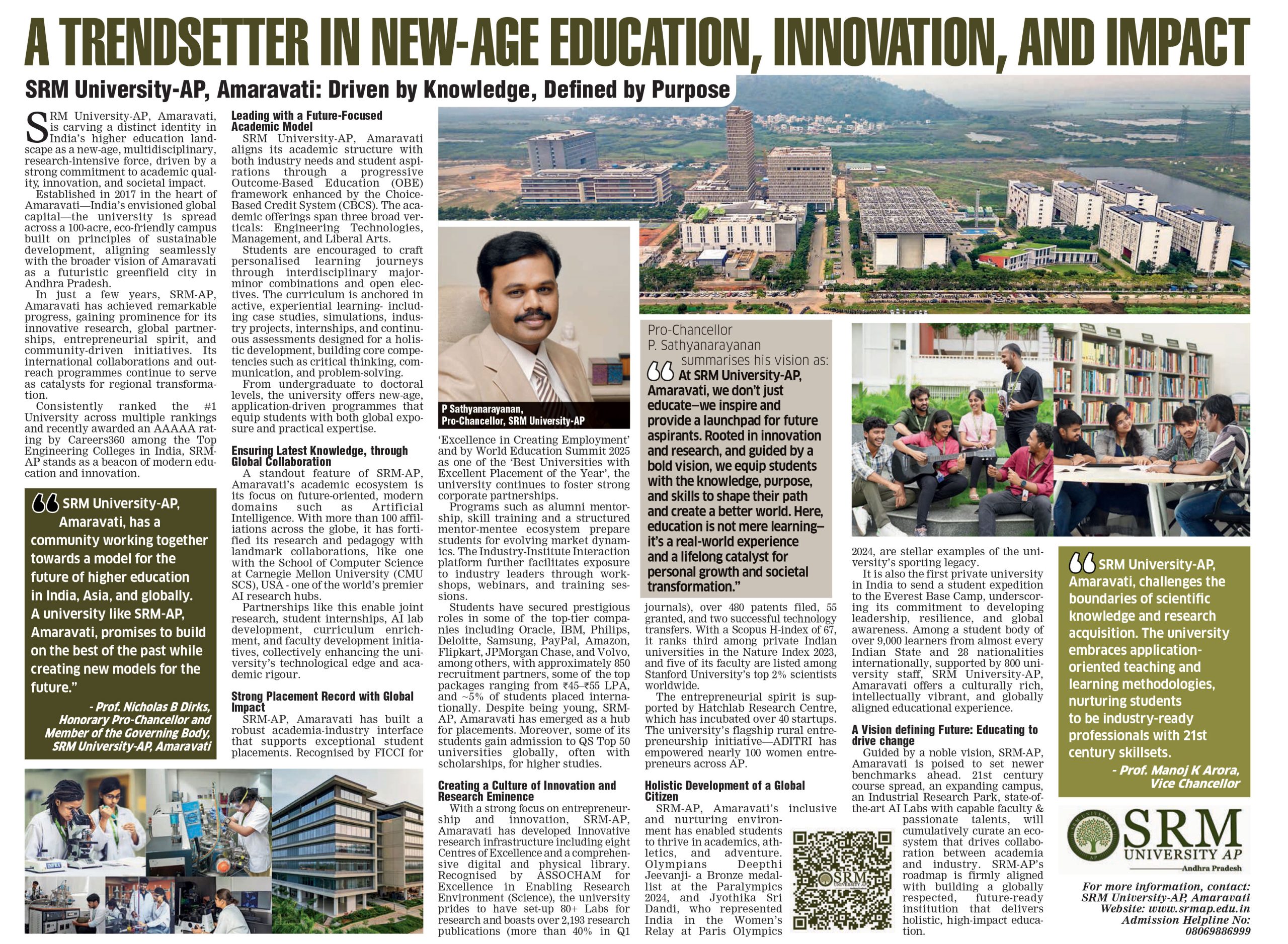
- Published in Awards and Rankings, News
Analysing Thermo-mechanical Bending Behaviour of Sigmoid FGM Sandwich Plate
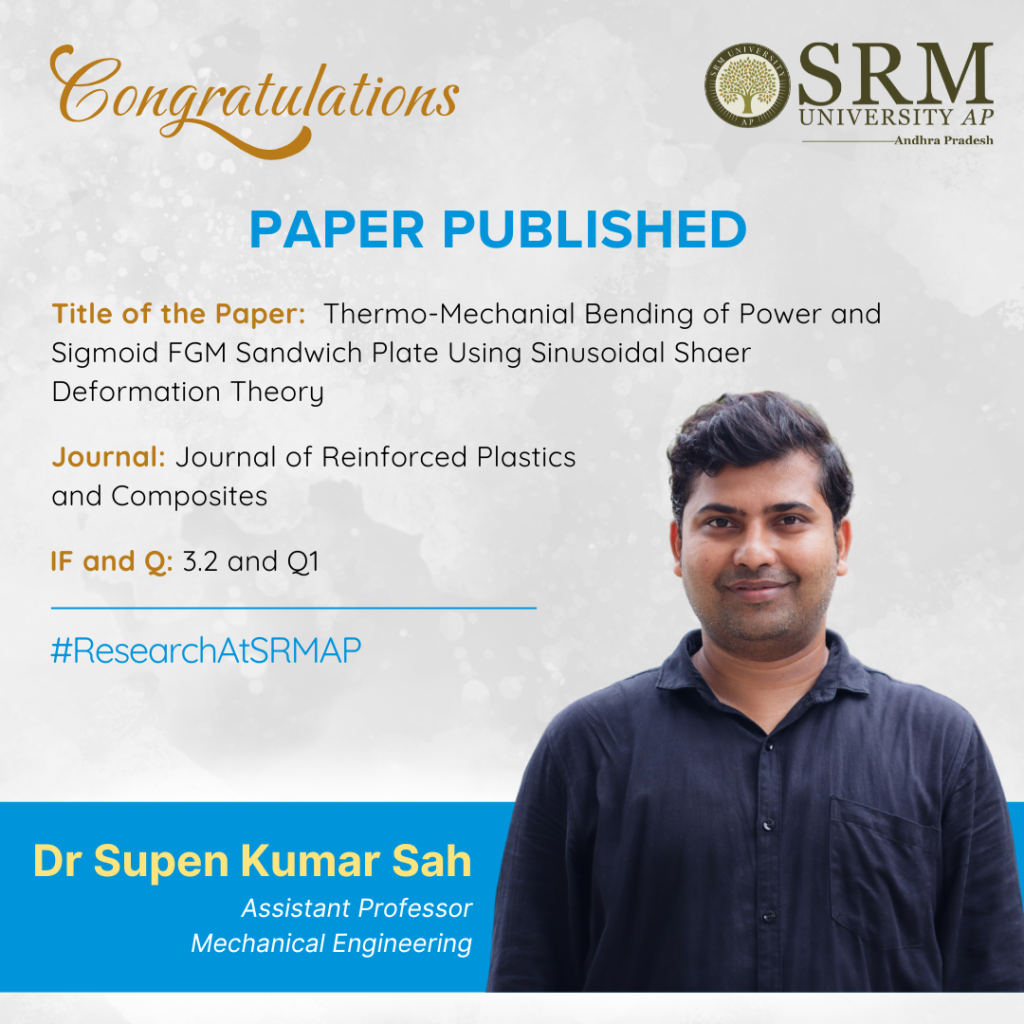
Dr Supen Kumar Sah, Assistant Professor at the Department of Mechanical Engineering presents his exclusive study on the thermo-mechanical bending behaviour of functionally graded material (FGM) sandwich plates using the Sinusoidal Shear Deformation Theory (SSDT) in his recent paper titled “Thermo-mechanical bending of power and sigmoid FGM sandwich plate using sinusoidal shear deformation theory”. The paper has been published in the Journal of Reinforced Plastics and Composites, having an impact factor of 3.2.
Abstract
This study examines the thermo-mechanical bending behaviour of functionally graded material (FGM) sandwich plates with temperature-dependent properties. FGMs, typically made from metal and ceramic, combine rigidity and high thermal resistance, and their properties are assumed to vary continuously in thickness. Using sigmoid and power law distributions, we analyse the smooth variation of properties and apply a one-dimensional heat conduction equation to determine temperature changes. The Sinusoidal Shear Deformation Theory (SSDT) is utilised to account for the sinusoidal distribution of shear stress while meeting traction-free boundary conditions. We derive the governing equations through Hamilton’s variational principle and Navier’s solution, resulting in closed-form solutions for center deflection, and normal and shear stresses of the plates. The analysis reveals that temperature-dependent properties and gradation indices significantly affect central deflection, normal stress, and shear stress. The SSDT results align well with existing shear deformation theory, confirming its accuracy.
Dr Sah collaborated with Dr Anup Ghosh from IIT Kharagpur on the research study. He aims to continue his research on FGMA and focus on the structural analysis of multidirectional Functionally Graded Material sandwich plates in the future.
- Published in Departmental News, Mechanical Engineering NEWS, News, Research News
A Full-bridge Multiple-load LED Driver Offering Clean Energy
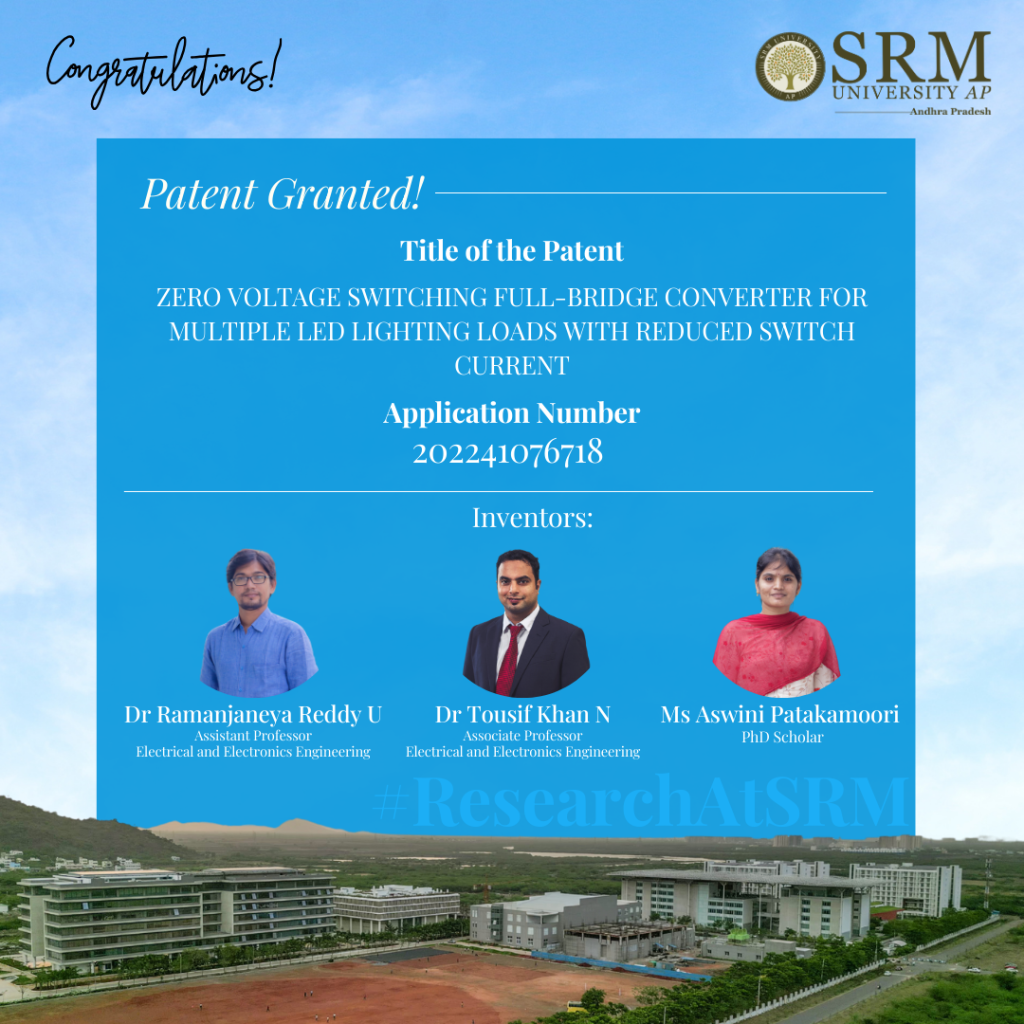
The Department of Electrical and Electronics Engineering proudly announces that the invention “Zero Voltage Switching Full-bridge Converter for Multiple LED Lighting Loads with Reduced Switch Current” with Application number: 202241076718 has been granted to Dr Ramanjaneya Reddy, Assistant Professor, Dr Tousif Khan Nizami, Associate Professor, and Ms Aswini Patakamoori, PhD Scholar in the Indian Patent Office Journal.
The research focuses on creating an energy-efficient power supply for LED lights, especially in areas that use a DC electricity system. The team has designed a system that can power multiple LED lights from a single unit, saving energy and cost. This system works at a very high efficiency of about 97.5%, which means very little energy is wasted as heat.
The special design uses a method called “soft switching,” which helps the internal parts of the system turn on and off with less stress, reducing heat and improving lifespan. It also needs fewer parts for each light, making it simpler, more reliable, and cheaper to produce. Additionally, the system allows the lights to be dimmed easily using a basic on-off control method, giving flexibility in brightness as needed.
Abstract
A 110 W soft-switched full-bridge multiple load LED driver is designed for DC-grid applications, achieving a high efficiency of 97.52%. The full-bridge configuration ensures that the switches carry minimal current, reducing conduction losses, and offers zero-voltage switching, significantly lowering switching losses. The reduced component count per lamp simplifies the design, enhances reliability, and reduces overall system costs. Additionally, the driver supports PWM-based dimming through simple on-off control, offering flexibility in illumination levels.
Practical Implementation/ Social Implications of the Research
The developed 110 W soft-switched full-bridge multiple-load LED driver is a highly efficient and scalable solution tailored for DC-grid applications, particularly those integrated with solar and battery-based energy systems. Operating at an impressive efficiency of 97.52% ensures minimal energy loss. This technology promotes sustainable development by enabling cleaner energy usage and reducing carbon emissions. Its simple, cost-effective design makes advanced lighting more accessible, especially in low-income or remote communities. Additionally, the ability to dim lights easily helps conserve energy further and allows users to adapt lighting to different needs, enhancing comfort and minimising waste.
Future Research Plans
To design more efficient, adaptable, and sustainable LED driver circuits,
- Extending soft-switching techniques to automotive, industrial, and smart lighting systems for broader applications.
- Incorporating digital control strategies for intelligent dimming, adaptive power regulation, and real-time performance monitoring.
- Exploring advanced semiconductor materials, such as Gallium Nitride (GaN) and Silicon Carbide (SiC), to enhance switching performance and thermal stability. Integration of energy harvesting techniques to create self-sustaining LED driver systems powered by renewable sources such as solar energy.
- Published in Departmental News, EEE NEWS, News, Research News
A New Phase of Engineering Education: Insights from Prof. Archana Sharma
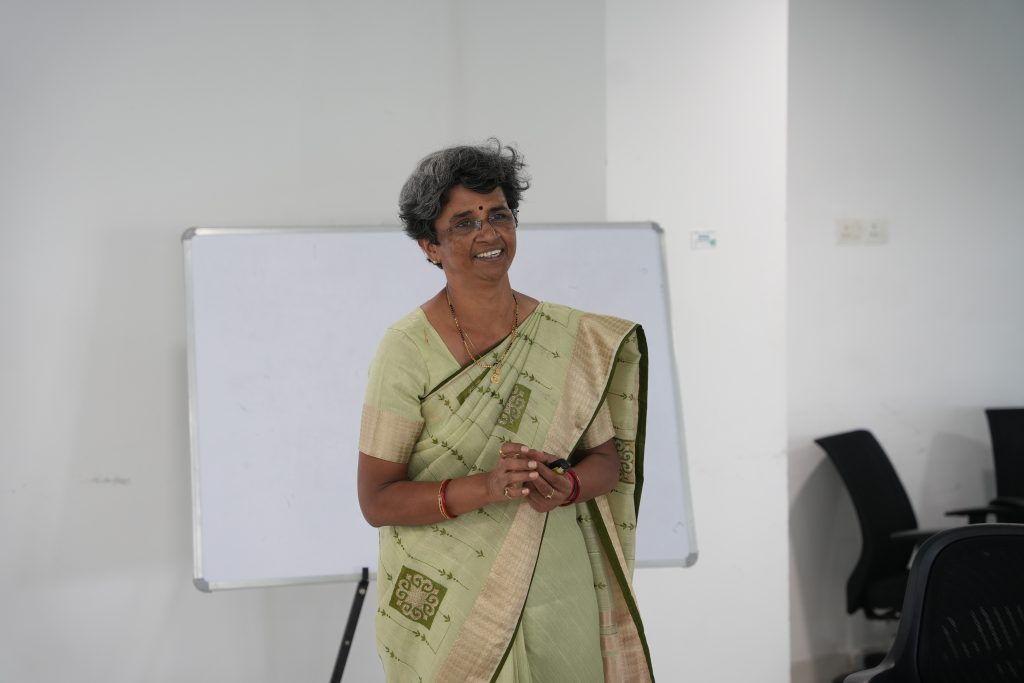
The Department of Electrical and Electronics Engineering invited Prof. Archana Sharma, Distinguished Professor at Dr Shyama Prasad Mukherjee International Institute of Information Technology, Naya Raipur, and Senior Professor at HBNI Mumbai, for a Distinguished Lecture on May 01, 2025. Prof. Archana Sharma delivered an insightful session on “Era of Multi-Disciplinary Research and Networking in Engineering Education” emphasising the significance of multidisciplinary research and networking in engineering education, commending institutes driving innovation for a progressive, Viksit Bharat.
Prof. Sharma, a globally acclaimed expert in beam technology and nuclear applications, elucidated that as India aspires to become a developed nation by 2047 during its ‘Amrit Kaal’, synergy among academia, industry, and researchers is vital. She also shed light on her pioneering contributions—from developing India’s first multi-gigawatt pulsed power system to driving sustainable technologies in wastewater treatment.
The talk sparked vibrant discussions around emerging research opportunities, with special focus on the possible installation of an electron beam accelerator at SRM AP for material and agricultural applications. The session provided invaluable insights to students and researchers on navigating the evolving landscape of science and technology with a multi-disciplinary lens.
- Published in Departmental News, EEE NEWS, News
Lecture on Large Values of Fourier Coefficients
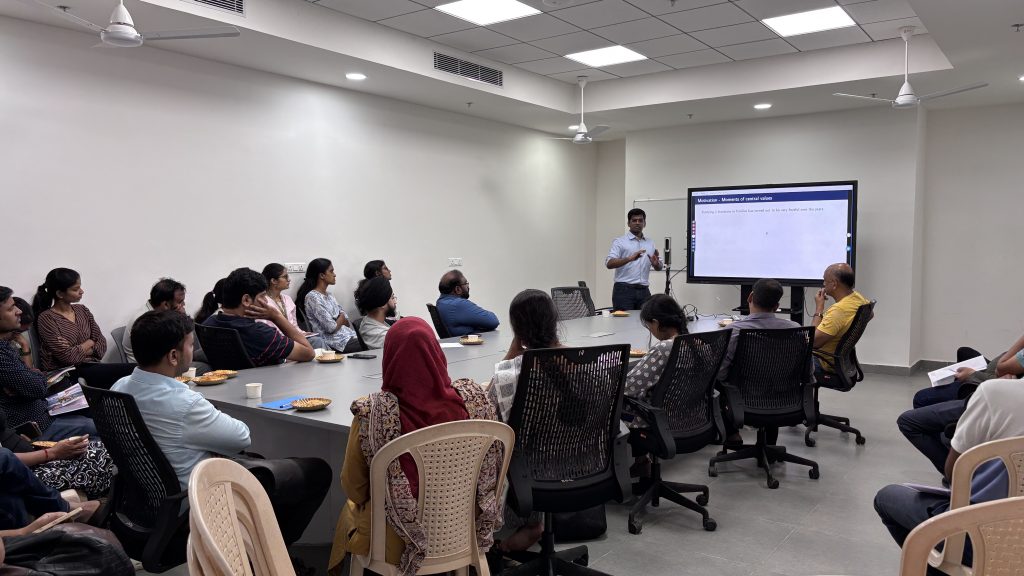
The Department of Mathematics organised a guest lecture on May 07, 2025. Dr Krishnarjun Krishnamoorthy, a post-doctoral fellow at the Beijing Institute of Mathematical Sciences and Applications delivered an insightful talk on “Large Values of Fourier Coefficients”. He discussed a modification of Soundararajan’s resonance method to produce large values of Fourier coefficients of half-integral weight Hilbert modular forms.
Around 30 participants, including faculty members and research scholars, attended the lecture. Following the talk, a vibrant question-and-answer session allowed attendees to engage deeply with the topic, showcasing their enthusiasm and curiosity.
The event was a great success, fostering academic interest and collaboration within the university. It provided a valuable opportunity for the academic community to interact with an active researcher in the field and gain deeper insights into advanced mathematical topics.
- Published in Departmental News, Math News, News
Skill Development Workshop on Next Gen Power Electronics
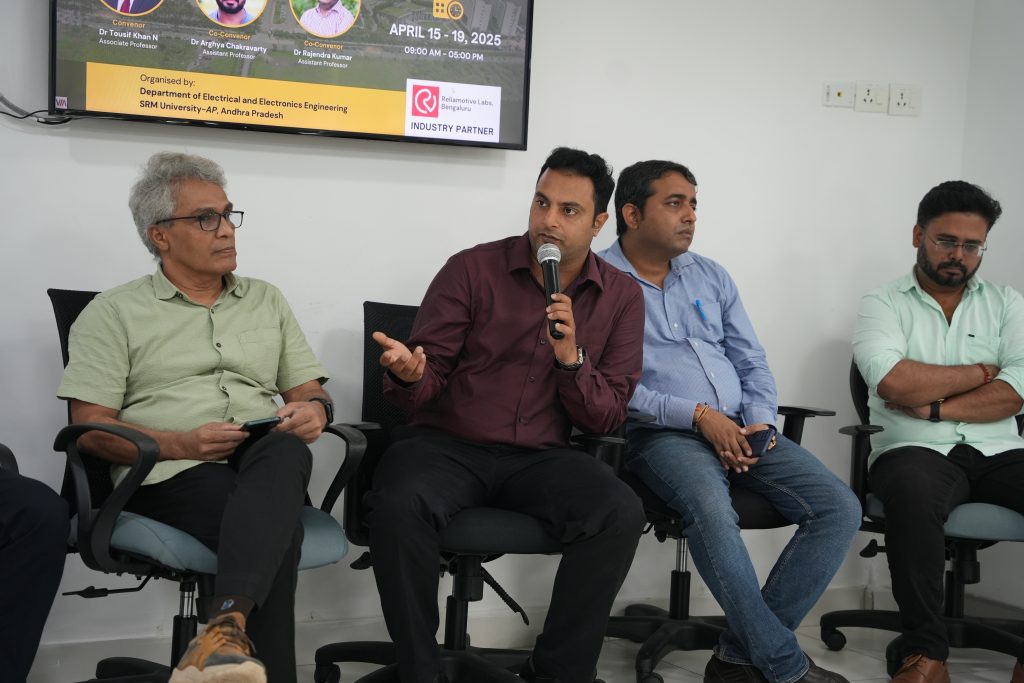
The Department of Electrical and Electronics Engineering organised a Skill Development Workshop on Next-Gen Power Electronics: Magnetics, Gate Drivers & Converter Design. Mr Sadeep Sasidharan, Director, Reliamotive Labs, Dr Ashiq Muhammed, Assistant Professor, NIT Calicut and Mr Aravind Gopalakrishnan, Co-founder, Reliamotive Labs, were the resource persons for the workshop along with faculty members of SRM University-AP.
The workshop provided participants with a comprehensive understanding of the rapidly evolving field of power electronics, combining theoretical knowledge with practical insights. Participants enhanced their expertise through offline sessions delivered by in-house faculty and industry experts from Reliamotive Labs, Bangalore.
The workshop covered the latest trends and technologies in power electronics, with a particular focus on hardware design and development of converters, the design of magnetics for the Flyback Converter, and designing PCBs using KiCad software. It offered hands-on learning opportunities and provided exposure to real-world applications. Participants had the chance to network with professionals, researchers, and experts, fostering collaboration and the exchange of innovative ideas. The workshop has resulted in the participants developing technical skills in circuit design, analysis, and troubleshooting, as well as gaining proficiency with industry tools and software.
An insightful Q&A session helped participants clarify concepts and deepen their understanding during interactions with industry experts. Post-workshop, attendees applied the knowledge gained through mini-projects or continued practice, especially in hardware design and magnetics. Networking with peers and staying connected with resource persons opened doors for collaborative opportunities and further learning.
- Published in Departmental News, EEE NEWS, News, Workshop
MSc Mathematics Student Secures Mitacs Globalink Research Award
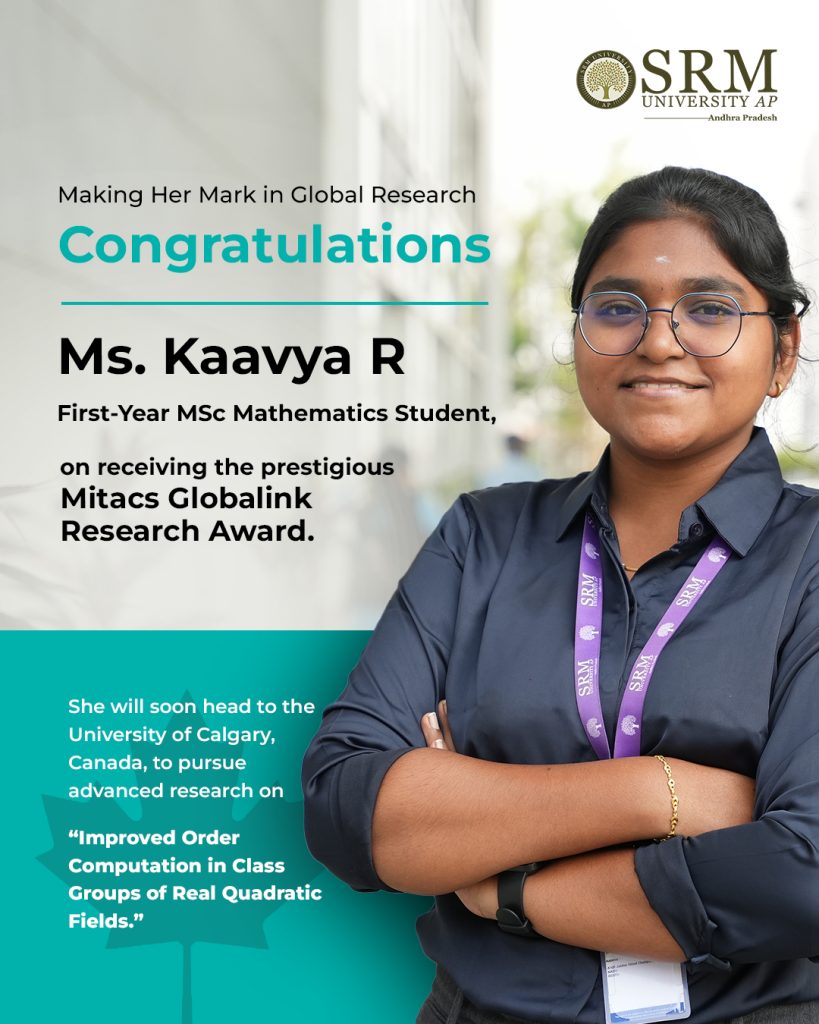
Ms Kaavya R, first-year MSc Mathematics student, has been awarded the prestigious Mitacs Globalink Research Award, a global award for international students. Under this honour, she will pursue a 12–24 week research project titled “Improved Order Computation in Class Groups of Real Quadratic Fields” at the University of Calgary, Canada, under the supervision of Prof. Michael John Jacobson. Prof. Kalyan Chakraborty, her mentor at SRM University-AP, continues to play a pivotal role in her academic journey.
This award offers a grant of $6,000 CAD (approx. ₹3,67,000) and marks Kaavya’s second major research opportunity, following her selection for the IASc-INSA-NASI Summer Research Fellowship, under which she will work at the Indian Statistical Institute, Bengaluru, with a monthly stipend of ₹12,500.
Kaavya credits her professors and department faculty for their constant support, especially Prof. Chakraborty, whose mentorship has helped shape her interests in number theory and research.
Kudos to Ms Kaavya for her remarkable achievement and continued success in exploring new mathematical horizons
- Published in Departmental News, Math News, News, Research News, Students Achievements


